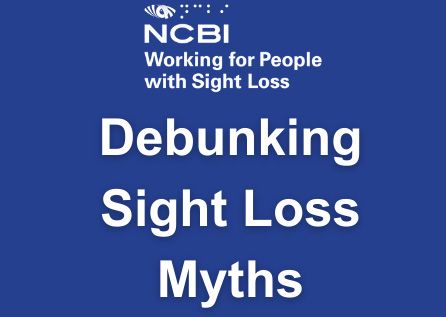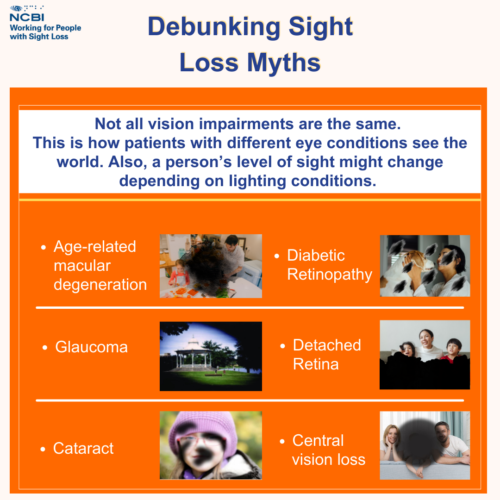
One aspect of vision impairment that is often misunderstood, or not understood at all, by people who haven’t experienced sight loss, is that not all vision impairment affects a person’s sight in the same way.

There are many different types of eye conditions that lead to vision impairment and each of those conditions affects a person’s field of vision in different ways. Residual vision can be further impacted by outside influences, including lighting.
Age-related macular degeneration (AMD), for example, is the leading cause of sight loss in Ireland for people over the age of 50. There are two forms of AMD – dry AMD and wet AMD and both cause progressive sight loss.
There are a number of symptoms of AMD that affect vision, including distortion, where straight lines appear wavy. As the condition progresses, it can lead to the loss of a person’s central vision, leaving only peripheral vision available.
The symptoms and type of sight loss for a person with AMD are completely different to the symptoms and type of sight loss experienced by a person who has Glaucoma, for example.
Glaucoma is an eye condition that causes damage to the optic nerve, which transmits images to the brain. The eye needs a certain amount of pressure to maintain shape and size. However, increased fluid can put pressure on the optic nerve and cause damage.
If glaucoma is not treated, damage can progress, causing a loss of peripheral (or ‘side’) vision and may eventually lead to complete sight loss.
Other conditions like diabetic retinopathy or cataracts can cause spots of sight loss across a person’s field of vision and both of these types of vision loss happen for different reasons.
As mentioned in previous blogs in our Debunking Sight Loss Myths campaign, people with sight loss as a result of these conditions are often left with residual vision, which they can still use in various aspects of their lives and this is another aspect of sight loss that is often misunderstood.
The graphic included in part five of our Debunking Sight Loss Myths campaign provides an opportunity to understand how sight loss looks for a person with any of the six included conditions. You can learn more about these conditions using the drop down menu at the top of our Eye Conditions page.
If you are experiencing any of these symptoms or forms of sight loss and are not being treated/have not been assessed, please call the NCBI Infoline on 1800 911 250 for more information about how you can seek assessment and treatment.